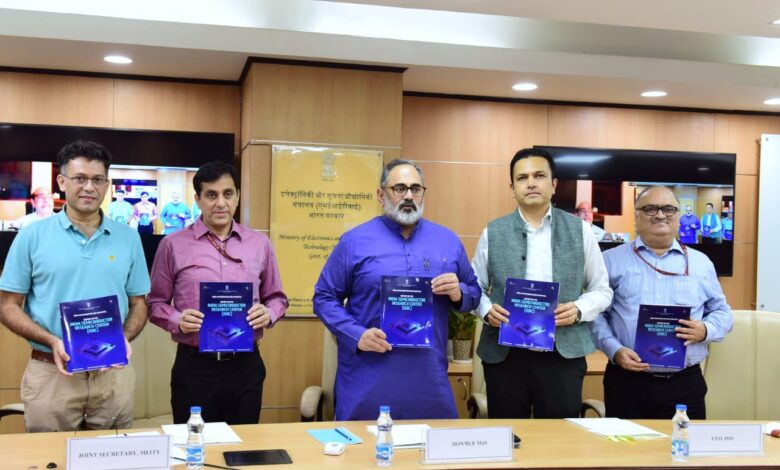India Semiconductor R&D Committee Presents Report on India Semiconductor Research Centre

In a significant development, the India Semiconductor R&D Committee submitted its report on the India Semiconductor Research Centre (ISRC) to Union Minister of State for Skill Development & Entrepreneurship and Electronics & IT, Rajeev Chandrasekhar.
The report is a pivotal step in realizing Prime Minister Modi’s vision for the semiconductor ecosystem in India. With the semiconductor industry becoming a vital component of India’s technology landscape, the ISRC holds a crucial position in driving innovation and research in this field.
MoS Rajeev Chandrasekhar expressed his appreciation for the dedicated efforts of the India Semiconductor R&D Committee in laying out a roadmap for ISRC. He stated, “After being absent from the semiconductor ecosystem for decades and missing many opportunities, we are now playing catch-up. This institution will be a core institution in India’s growing capabilities in semiconductors. It will be the Indian equivalent of IMEC, Nano Tech, ITRI, and the MIT Micro-electronic labs, which have been the pioneers of every cutting-edge technology in the world.”
The Committee, in its report, comprehensively identified the core pillars of ISRC, which include Advanced Silicon, Packaging R&D, Compound/Power Semiconductor, and Chip design & EDA.
Furthermore, MoS Rajeev Chandrasekhar emphasized that the ISRC report aligns with the Prime Minister’s vision for a ‘Viksit Bharat’ (Developed India). He stated, “In the next 4-5 years, the ISRC will become one of the leading semiconductor research institutions in the world.”
Notably, in December 2021, the Indian government committed a substantial amount of Rs 76,000 crore (approximately US$10 billion) to catalyze the semiconductor manufacturing ecosystem in India. This funding reflects India’s intent to establish itself as a prominent player in the global semiconductor landscape.
The ISRC aims to create a world-class research institution focusing on semiconductor processes, advanced packaging, compound semiconductors, and Fabless design and EDA tools. By fostering collaboration between industry, academia, and government, ISRC endeavors to nurture a vibrant semiconductor ecosystem that bridges the gap between research and manufacturing.
The initiative plans to strategically invest in achievable technology nodes and foster collaborations with global research centers, academia, and industry. This move is expected to transform the Centers of Excellence in India’s academic institutions into globally competitive entities, making India an attractive destination for global companies.
The ISRC seeks to establish India as a global foundry supplier for semiconductors, packaging, and integrated systems. Through investments in research, education, and collaboration, India aims to secure a prominent position on the semiconductor map of the world and realize its vision of becoming a global semiconductor research and innovation hub.




